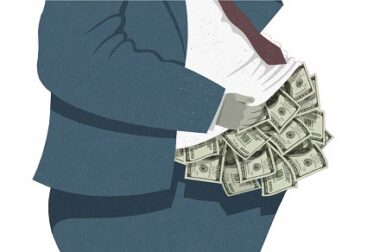However, it has value in the decision-making process, where it is being used as a tool for averting risk. For investors, the margin of safety serves as a cushion against errors in calculation. Since fair value is difficult to predict accurately, safety margins protect investors from poor decisions and downturns in the market. It is a highly subjective task when an investor decides the security’s actual worth or genuine worth.
How Do You Calculate the Margin of Safety in Accounting?
A life-long gamer and tech enthusiast, he has a particular affinity for analyzing technology stocks. Muslim holds a bachelor’s of science degree in applied accounting from Oxford Brookes University. The margin of safety can be understood in terms of two different applications that are budgeting and investing. So, to reiterate, in the example above, you can use the three different ways of calculating the Margin of Safety to confirm that the company is undervalued.
- It denotes that the company is running at a loss and is below its breakeven point.
- Generally, a high degree of security is preferred, which shows the company’s resilience in the face of market uncertainty.
- It does not, however, guarantee a successful investment, largely because determining a company’s “true” worth, or intrinsic value, is highly subjective.
- If you believe a stock’s intrinsic value is $50, but you’re able to buy it for $30, your prediction can be off by 40% before you’d lose money.
Income Statement Under Absorption Costing? (All You Need to Know)
The margin of safety is also an important figure because it shows how safe the business is in producing products. For example, assume a manufacturer calculates its breakeven to be 100 units. Based on its sales projections, the company anticipates selling 150 units during the next quarter. Assuming Google intends to produce 500,000 units at the cost of $300 per unit to https://accounting-services.net/ sell at $400, we could calculate the margin of safety as a ratio or percentage, and in both dollar and unit sales. Margin of safety calculator helps you determine the number of sales that surpass a business’ breakeven point. The breakeven point (also known as breakeven sales) is the point where total costs (expenses) and total sales (revenue) are equal or “even”.
A Margin of Safety Stock Screener
Margin of safety may also be expressed in terms of dollar amount or number of units. Break-even is the point at which a business is not making a profit or a loss. Businesses calculate their break-even point and are able to plot this information on a break-even graph.
What is your risk tolerance?
While any change in either variable or fixed costs will change operating leverage, the fluctuations most often result from management’s decision to shift costs from one category to another. As the next example shows, the advantage can be great when there is economic growth (increasing sales); however, the disadvantage can be just as great when there is economic decline (decreasing sales). This is the risk that must be managed when deciding how and when to cause operating leverage to fluctuate.
The market price is then used as the point of comparison to calculate the margin of safety. The margin of safety can be calculated in dollars by subtracting the current market price direct labor efficiency variance formula of an asset from its intrinsic value. The intrinsic value is determined by factors such as company fundamentals, industry performance, economic conditions, and investor sentiment.
The 26 Best Warren Buffett Investing Quotes of All Time
In other words, Bob could afford to stop producing and selling 250 units a year without incurring a loss. Conversely, this also means that the first 750 units produced and sold during the year go to paying for fixed and variable costs. The last 250 units go straight to the bottom line profit at the year of the year. Management uses this calculation to judge the risk of a department, operation, or product. The smaller the percentage or number of units, the riskier the operation is because there’s less room between profitability and loss.
The cost may be different and inaccurate as every investor uses a different and unique method of calculating the actual value. The margin of safety represents the gap between expected profits and the break-even point. It is calculated by subtracting the breakeven point from the current sale and dividing the result by the current sale. Value investing follows the Margin of Safety (MOS) principle, where securities should only be purchased if their market price is lower than their estimated intrinsic value. Most value investors believe that the higher the margin of safety, the better.
The idea is to locate mismatches between the intrinsic value of stock and the current stock prices. Therefore, deep value investing requires experienced investors with a huge margin of safety. In business, the margin of safety is the variation between the break-even sales and the actual sales. The margin of safety may be used to inform the company’s management about an existing cushion before it becomes unprofitable.
Translating this into a percentage, we can see that Bob’s buffer from loss is 25 percent of sales. This iteration can be useful to Bob as he evaluates whether he should expand his operations. For instance, if the economy slowed down the boating industry would be hit pretty hard. Although he would still be profitable, his safety margin is a lot smaller after the loss and it might not be a good idea to invest in new equipment if Bob thinks there are troubling economic times ahead.






